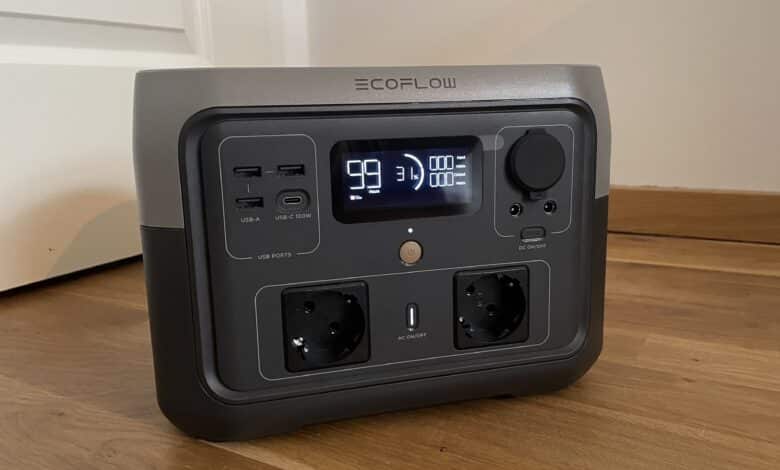
The popularity of power stations is growing and thriving. This is not only due to the great desire of many people to become a little more self-sufficient from the public power grid. On top of that, the mobile energy storage units offer friends of outdoor activities and camping trips the possibility of not having to do without electronic helpers on the road. One of the most popular manufacturers in this segment is EcoFlow. The company has already proven that its good reputation is justified in our practical tests of the EcoFlow River Pro (test) and the EcoFlow DELTA Pro (test). In today’s EcoFlow River 2 Max test, we want to take a closer look at another power station from the manufacturer. Let’s see what the portable energy storage with features such as safe LFP battery, fast charging properties and practical app has so on the box.
Technical data
| Battery capacity | 512 Wh |
| Outputs |
. |
| Inputs |
.
|
| Charging Time | 0 to 100% within 60 minutes with Schuko (660 watts) |
| Dimensions | 27 x 26 x 19.6 cm |
| Weight | 6 kg |
| App support | Yes, EcoFlow app for iOS and Android |
| Price (MSRP) | € 449.00 * |
Scope of delivery
No big surprises can be found in the delivery box. In addition to the EcoFlow River 2 Max Portable Power Station itself, there is the AC 220V power charger, a 12V car charging cable, a DC5521 to DC5525 cable, and the matching user manual.
EcoFlow River 2 Max review: design and workmanship
- Classic EcoFlow design
- High-quality workmanship
- Practical carrying handle
Let’s start with the looks. Here, at first glance, nothing has really changed compared to the other portable models of the manufacturer. EcoFlow also relies here on a color combination of dark and light gray. While the ports for electronic devices are on the front next to the practical and expressive display, the power station can be supplied with new energy via the back. On the left and right, there are again ventilation slots that are supposed to prevent overheating.
I find the carrying handle particularly practical. With its help, the 27 cm x 26 cm x 19.6 cm measuring power station can be carried from A to B comfortably. Thanks to its slim weight of just 6 kg, the way to the barbecue party in the city park may then also be a bit longer. In direct comparison to the River Pro, I find the design of the carrying handle more practical. Since it does not protrude upwards, but runs to the back, you can easily stack things on the River 2 Max. This is a big advantage especially when packing the trunk.
However, I find this even better solved by the competition from Jackery. The Jackery Explorer 1000 Pro (test), for example, relies on a retractable handle. The big advantage of this is that while it is portable, it can ultimately be placed in the trunk like a cube to save as much space as possible. While subjective preferences always play a role in assessing the looks, you can’t have two opinions when it comes to the build quality. This is namely at the EcoFlow River 2 Max at the very highest level.
EcoFlow River 2 Max test: Here, any device can secure power
- Diverse connections
- 500 watts of continuous power possible
- Temporary maximum of 1,000 watts possible
In addition to the River 2 Max tested by us, EcoFlow offers the series in two other versions. The smallest is the “simple” River 2, which offers 256 Wh. At the other end of the scale is the River 2 Pro, which has a capacity of 768 Wh. In the middle is the River 2 Max with 512 Wh, which we tested. And it scores with a large variety of ports in our test.
In addition to two classic Schuko sockets, which can output 500 watts permanently by default and 1,000 watts temporarily at most, you’ll find three USB-A ports, a USB-C port with up to 100 watts of power, and three times DC-Out. Consequently, all your technical devices from smartphones to Bluetooth speakers and notebooks can be conveniently powered here. Sooner or later, however, even the 512 Wh battery of the River 2 Max will run out.
Then it can be given new life again via a number of options. On the one hand, you can charge the River 2 Max via a classic power outlet. The matching cable is included in the scope of delivery and is simply plugged into the power socket. Fortunately, EcoFlow integrates the power supply into the power station itself. This makes it easier to take the power cord with you. Alternatively, an XT60 port is available for charging the power station. Here you can recharge the battery by solar energy or but your car.
EcoFlow River 2 Max Test: LiFePO4 for safety and durability
- Special LiFePO4 technology lasts through many charging cycles
- 512 Wh battery capacity
I was very pleased that EcoFlow decided to use LiFePO4 batteries in its River 2 Max. These are not only more durable than classic lithium-ion batteries due to their higher number of possible charge cycles. On top of that, they offer a higher degree of safety. For example, they cannot self-ignite, nor do they use toxic and questionably mined substances such as cobalt or nickel in their production. Consequently, the River 2 Max is not only a safe product, but above all a durable one, with a lifespan that should be many times that of a power station with a classic lithium-ion battery.
But why then do some power station manufacturers still rely on classic lithium-ion technology? These also have their advantages, which cannot be dismissed out of hand. The decisive advantage is that more battery capacity can be created at the same size due to the chemical composition. The magic word here is energy density. Whether this is more important than more longevity and safety is something everyone has to decide for themselves. Personally, I prefer power stations that have LiFePO4 batteries.
EcoFlow River 2 Max Test: With the EcoFlow App always everything in view
Of course, the River 2 Max also supports EcoFlow’s in-house app. This is primarily used to provide an overview. You can conveniently monitor the battery status of the power station via your smartphone. This is especially handy when you charge it via solar panels and want to estimate how long the charging process will last. The power station provides a corresponding estimate in this regard. In addition, you can see how much power the power station is outputting or how much power it is currently charging with. If you don’t have time pressure when charging the Powerstation, you can save the battery by adjusting the charging speed.
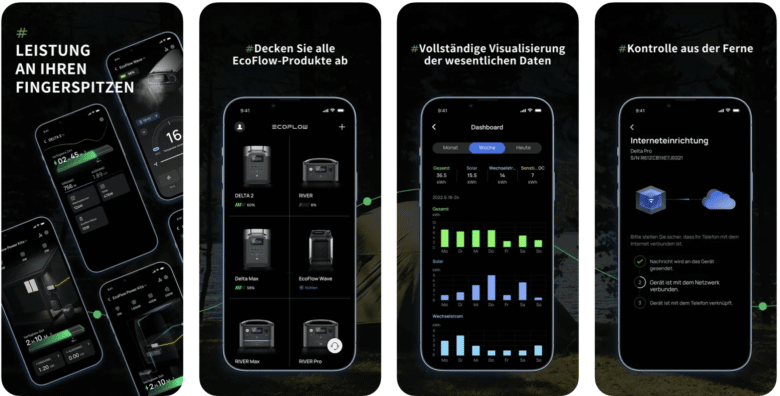
If the battery is charged more slowly, it is much easier on the battery and prolongs its life. Thanks to the option of not only pairing the power station with your smartphone via Bluetooth, but also integrating it into the home network, you can always keep an eye on everything via the app, even when you’re on the go. All in all, the EcoFlow app scores with a good overview and practical features that not only offer high operating convenience. On top of that, the app settings can also increase the lifespan of the power station.
EcoFlow River 2 Max Test: The Practical Test
On paper, the EcoFlow River 2 Max brings everything that a good power station should deliver. But is this also reflected in practice? One thing should be said in advance: This is not a full-fledged emergency power generator. In view of the 512 Wh battery capacity, the mobile energy storage would quickly run out of breath. However, if you want to be prepared for short, minute-long power outages, you can definitely install the most important devices on the power station. The River 2 Max can output a total of 500 watts of power permanently. It proved this without any problems in the test. Sometimes you can even go beyond the 500 watts.
Finally, even peaks of a temporary 1,000 watts are possible. After a few minutes, however, this energy-intensive mode is then at an end. I was able to charge my tablet, smartphone, Bluetooth speaker and MacBook with the River 2 Max without any problems. I also connected my drill with almost 600 watts for a change. This also worked flawlessly. However, if the River 2 Max has to draw a bit more from the full, you can feel the increasing load in the fan noise. I found these to be a bit annoying from time to time. However, this should certainly be quickly overheard in outdoor use.
Although I only tried the Powerstation in the comfort of my own home, I can imagine that its portable and rugged design gives it great benefits outdoors as well. Thanks to the practical display, you always keep an overview. The Powerstation also proves to be a reliable partner when it comes to charging. I was able to fully charge the 512 Wh battery within just one hour. This is made possible by the maximum input power of 660 watts via the wall socket. Alternatively, you have three other options at your disposal.
So you can also charge the power station with the car with about 96 watts, via USB-C port with 100 watts and also via solar with up to 220 watts. Especially the possibility to charge via solar makes the River 2 Max interesting for festival goers, outdoor enthusiasts and campers. However, I would have been happy about a suitable adapter in the scope of delivery. So all in all, EcoFlow offers a surprising number of charging options here, which I really like.
EcoFlow River 2 Max Test: Conclusion
If you’re currently looking for a good power station, you can’t go wrong with the EcoFlow River 2 Max. In my opinion, it primarily scores with its versatility. On the plus side, it has a cool, understated design that also offers the necessary robustness thanks to its high build quality. Furthermore, it offers the optimal combination of portability and performance. The 512 Wh battery should be enough for most average users.
A very big plus point for me is the battery type that EcoFlow has once again chosen for the River 2 Max. The LiFePO4 batteries offer the necessary safety and longevity that a power station should offer in my view. The whole thing is rounded off with a short charging time, plenty of ports and the practical app. Only the somewhat loud fan and the non-existent adapter for connecting solar panels are deductions in the B grade for me. Otherwise, you get an uncompromising power station in a compact format at a fair price.
EcoFlow River 2 Max
Design & Verarbeitung
Hardware
Leistung
Preis-Leistungs-Verhältnis
92/100
The EcoFlow River 2 Max is a powerful power station that combines safety with durability.




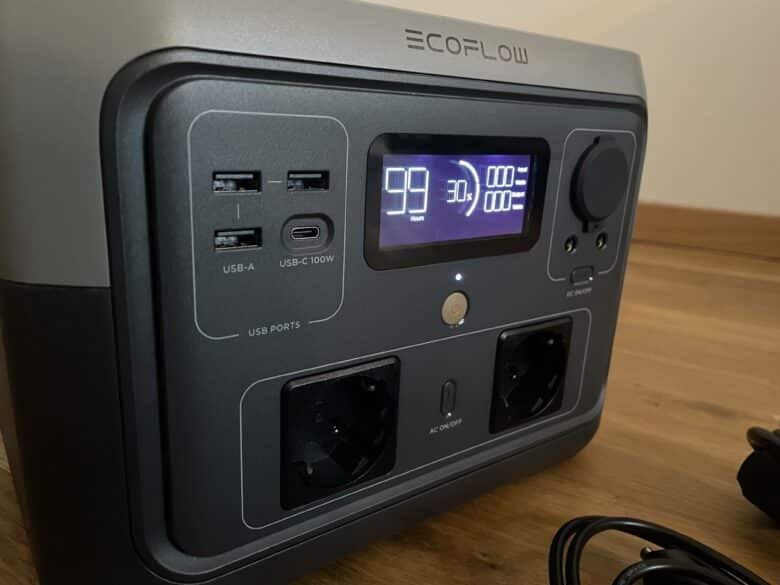
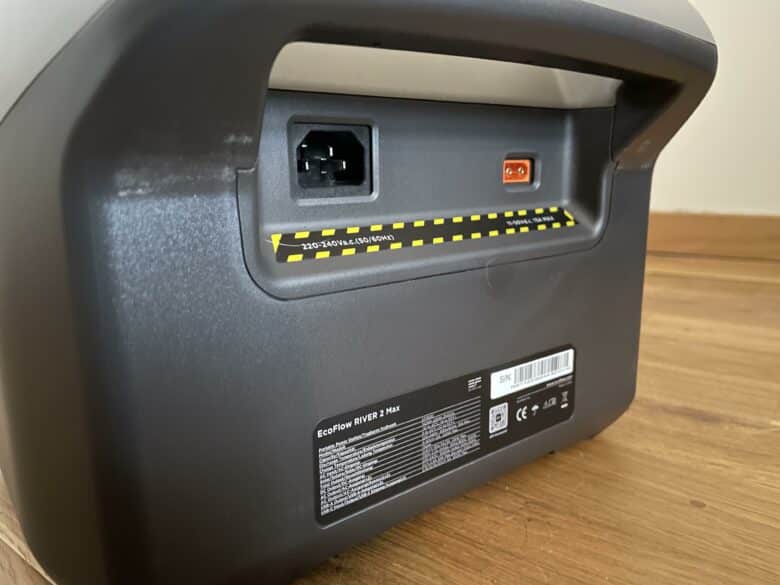








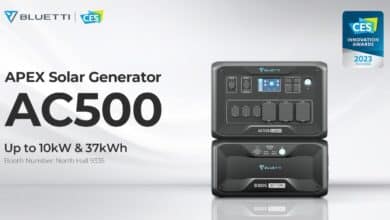
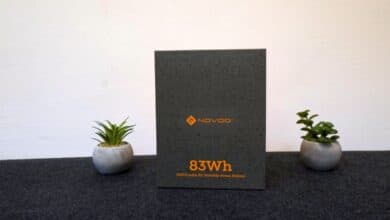
No replies yet
Neue Antworten laden...
Gehört zum Inventar
Beteilige dich an der Diskussion in der Basic Tutorials Community →